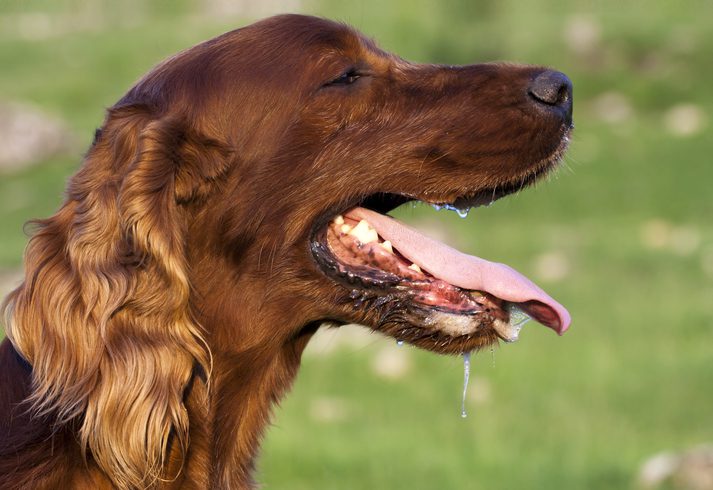6 Signs of a Panic Attack in Dogs
Does your dog have panic attacks? Would you know how to recognize them if so? What are some of the most common signs of a panic attack in dogs?
Some dogs are prone to panic attacks, just like some humans are. Additionally, even the calmest of dogs may experience panic attacks under certain circumstances. In the article below, we’ll explore the six most common signs of a canine panic attack so you can learn how to recognize them in your own pet. With the help of this information, you can stay on top of your dog’s mental health needs.
Pacing
Pacing is a sign of fear in dogs and is one of the first signs most pet owners notice. A dog who is afraid or nervous about something typically will not settle down very easily, but will instead find a “route” to pace back and forth through the home.
Pacing may occur for a short while if your dog is frightened by something that doesn’t last. For example, if he hears a round of thunder, he may pace until the storm calms down again. However, some dogs may pace frantically when they experience long-term panic, such as separation anxiety episodes. These dogs likely need professional help with their anxiety.
Panting and Drooling Excessively
Excessive panting and drooling are some of the earliest signs of fear and panic in dogs. They can let you know that your dog’s fear has gone beyond just a quick scare or startle and has moved into the realm of true panic.
Keep in mind, however, that excessive panting and drooling can also indicate several other problems. They may go along with pain and illness in some dogs, and they are also early signs of heatstroke. Consider the specific situation as well as your dog’s other potential symptoms to narrow down the possibilities.

Darting Eyes or Focused Eyes
Dogs who are nervous may have eyes that dart around frantically, looking for the source of whatever is causing their fear. Your dog’s nervous glances may be accompanied by moving his head quickly back and forth, or he may stand fairly still other than his eye movement.
On the other hand, some panicked dogs may be very focused on one perceived threat. If your dog is afraid of the sound of a car running, for example, he may stare fixedly at the car without moving for a long while.
Tail Tucked
Tail tucking can indicate a variety of moods and problems for dogs, and panic is one of them. If your dog is hunched with his tail tucked between his legs or held low to the ground, this could tell you that he’s afraid. However, it can also be a sign of submission as well as pain and illness, so it’s important to consider other symptoms along with tail tucking too.
Tail tucking is often one of the first signs that your dog may be getting frightened. It can let you know that you need to remove your dog from the situation soon.
Hiding
Hiding behavior is common in dogs who are frightened. If your dog is trying to find a place to hide, tucking himself behind or between your legs, or keeping himself as small as possible in a corner of the room, he is likely experiencing panic. And if he runs to his crate or bed at the first sign of something that makes him nervous, this is a sign of panic as well.
While it is important to make sure your dog has a safe space, it is also necessary to help him experience his fears in slow, gentle, controlled environments. Working with a trainer may be a good idea for this purpose.

Demanding Your Attention
Often, when a dog is very frightened, he will demand attention from his owner in an attempt to soothe himself. Your panicked dog may jump up on you, paw at you, whine, or nervously try to stay in your line of sight.
If your dog does this, it is important to find the right balance between comfort and coddling. You can address him and say something brief—like “it’s okay”—but don’t overdo it. Otherwise, your dog’s panic will be reinforced.
Summary
By learning how to notice signs of panic in your dog, you’ll know when he needs to be removed from a situation before the problem gets out of hand. You’ll also better understand your pet’s mental health and can make adjustments, when possible, to accommodate this too.
If you suspect your dog has frequent panic attacks, talk to his vet about managing this problem. In some cases, dogs simply need more structure and training; in others, they may need anti-anxiety medication to handle their panic. Either way, your vet can give more specific information for your pet.
For pet emergencies in Atlanta, GA, The Village Vets has a 24/7 emergency location in Decatur, GA. If your pet is facing an emergency, give them a call at (404) 371-9774.

